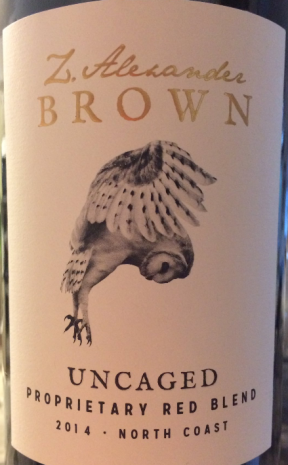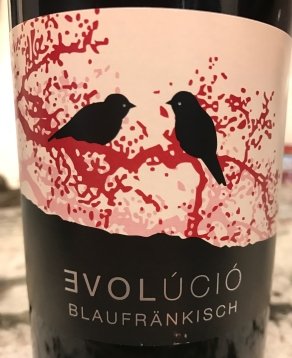When talking about wine, there is quite a lot in, or on, a label. But I’m not talking about the legalities of compliance. I’m talking about the art. I like to believe that the label creates an unspoken connection between the winemaker and the consumer.
I am a recovering obsessive cab disorder person. On the road to recovery, I have found that I like to wander around wine shops and look for something new to try. Sometimes I am looking for something specific, but sometimes, I’m just wandering — I may be looking for a new varietal but don’t have a specific producer, or even a region, in mind. When this happens, I am choosing my wine by the label that speaks to me.
I truly believe there is some magical, cosmic process that occurs when a wine label forces you to notice it, and I recently came upon a book that champions the wine label and affirms my own beliefs that there is some magical thing that happens. The book is The Art of the Wine Label, and authors Jeffrey Caldeway and Chuck House cover the business, the history and the design of the wine label with such poetic prose that it was easy for me to feel affirmed in my belief that there is in deed a magic to it all. Here is an excerpt from the book that sums up how I feel about a wine bottle label much more eloquently than I ever could:
A successful label beckons from a distance, then invites personal discovery the closer you get. Like revealing clues in a detective novel, the message on a bottle must engage the reader, skillfully maintain the suspense, and be compelling enough to lead you to the mystery inside.
…. the package provides the only sensory clues about what lies within….
I think most people will agree, there are a number of factors that all come together to create any particular experience. The reason that wines can be so fantastic while sipping them on the patio of a Tuscan villa overlooking the beautiful hills and then not seem nearly as good when we are sipping the same wine in our living room is because the combined factors of the experience are different. I think a label and the story behind it, can also have an enhancing effect on our perception of the wine we are drinking.
I recently had the incredibly awesome experience of being a guest on the podcast Wine Two Five with Co-Hosts Valerie Caruso and Stephanie Davis. Proof that I can talk nonstop about wine labels, here’s a link to the show notes where you can also access the podcast. Valerie Caruso dug up some cool info on wine found in King Tut’s tomb. The jars of wine contained information on the location and proprietorship of the vineyard and name of the winemaker. So, labeling for identification’s sake has been around since the beginning. But when did artistic license begin to play a part?
 One of the earliest attempts at art on the label that I could document was in Bordeaux in 1924. Chateau Mouton Rothschild commissioned graphic designer, Jean Carlu, to create an artistic label.
One of the earliest attempts at art on the label that I could document was in Bordeaux in 1924. Chateau Mouton Rothschild commissioned graphic designer, Jean Carlu, to create an artistic label.
The concept was considered to be ahead of it’s time  and Mouton Rothschild would not put art on the label again until 1945 in tribute to the Allied victory in WWII. This label was a huge success, and from 1945 on, the art has been an important part of the Mouton Rothschild brand. Art from artists such as Warhol, Kadinsky, Picasso, Dali and Chagall just to name a few have graced the labels. Interestingly, Prince Charles had the honor of painting a label in 2004 in honor of the 100 year anniversary of the France/England agreement to be allies in WWI.
and Mouton Rothschild would not put art on the label again until 1945 in tribute to the Allied victory in WWII. This label was a huge success, and from 1945 on, the art has been an important part of the Mouton Rothschild brand. Art from artists such as Warhol, Kadinsky, Picasso, Dali and Chagall just to name a few have graced the labels. Interestingly, Prince Charles had the honor of painting a label in 2004 in honor of the 100 year anniversary of the France/England agreement to be allies in WWI.
It would stand to reason that the image would be the visual manifestation of the what the bottle contains, or the story behind it, but that doesn’t seem to always be the case. At Mouton Rothschild, the artists have complete freedom, although many of them seem to have been inspired by the wine and created visuals relating to the vine or to the Ram which is the icon of the brand. See all of the Mouton Rothschild labels here.
 The most interesting story I discovered while researching this article was from Santa Barbara producer Sine Qua Non. The winemaker, Manfred Krankl, designs his own labels which are known for being somewhat risqué. One of his labels was actually rejected by the TTB — it apparently was for a wine called The Good Girl and featured a nude man with his face in the lap of a nun. It would seem that this is another case of the label not necessarily being related to the wine. I would really love to interview Mr. Krankl someday and hear the stories of his labels.
The most interesting story I discovered while researching this article was from Santa Barbara producer Sine Qua Non. The winemaker, Manfred Krankl, designs his own labels which are known for being somewhat risqué. One of his labels was actually rejected by the TTB — it apparently was for a wine called The Good Girl and featured a nude man with his face in the lap of a nun. It would seem that this is another case of the label not necessarily being related to the wine. I would really love to interview Mr. Krankl someday and hear the stories of his labels.
The Hussy is one that caused him some trouble with the TTB, but eventually was approved.
The bottom line is that ALL labels become the documented history of the wine and its producer. A label is what makes the wine and the brand recognizable. Branding is in large part the color, the font, the positioning of the name or maybe even the shape of the label. Sometimes the artwork is simply a rendition of the property, but then there are the ones where the artwork surely seems to be something more than branding. Unique and special. It is an expression, a story.
“A successful wine package is a sculpture of the moment, an authentic expression of time and place. At its best, it transcends the past and the present with a vision of the future that is uniquely its own.” — Chuck House

I am a sucker for birds on the label. Not long ago I was walking through my local grocery store and this label stopped me in my tracks. I can’t explain why, but the owl’s face just grabbed me. I was unfamiliar with this wine but it was around $12 so it was a no brainer to take the owl home with me and see what it had to say. It turns out this brand is co-owned by Zac Brown. I’m a fan of The Zac Brown Band so this was a fun little discovery and $12 very well spent.
Here a few more of my choices that include a bird:
I’m going to leave you with another excerpt from Icon:
“Inherently theatrical, wine packages are entertainers that come alive in front of an audience.….Maybe we designers are only stagehands, make-up artists, or set decorators, whose job it is to enable the winemaker to capture the audience’s heart. “ ….
“Whether it be a comedy, a drama, or perhaps a farce, everyday existence is heightened and dramatized by the presence of wine, which sets the stage for magic possibilities. The label is the overture, as well as the finale, and the human drama is richer for it.
Admittedly a very dramatic summation, but a drama I will happily play my part in.
Does the label ever play a role in choosing you wine?
P.S. For an excellent book on the legalities and compliance requirements for wine labeling, The Inside Story of a Wine Label, by Ann Reynolds is an excellent source of information.




Very informative read, Cathie. I’m citing this in my Wine Marketing class on Branding and research. Thank you for the post 🙂
LikeLike
Thank you Damien! I’m honored!
LikeLike